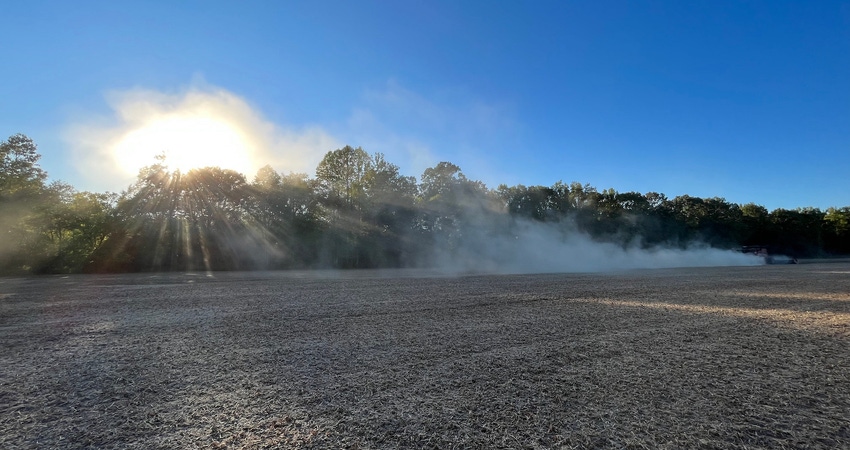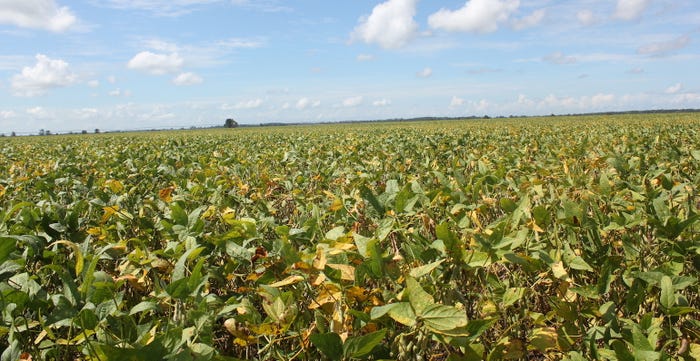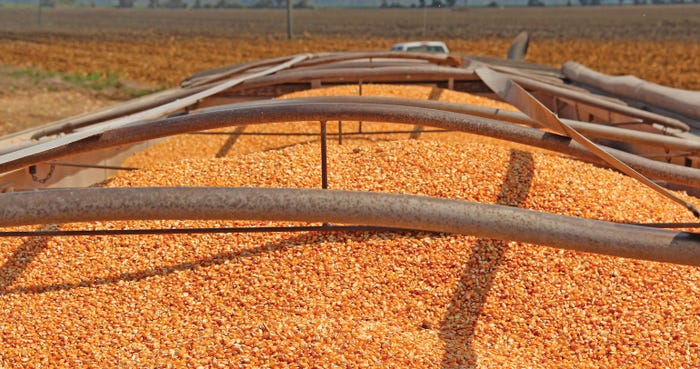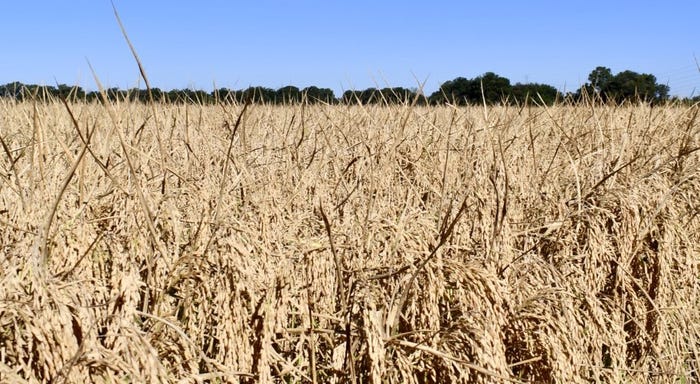
Despite the many challenges of 2022, the October USDA production forecasts released during harvest did not paint the grim picture many were dreading. For the Midsouth area, average yields of major row crops were down, as most would expect. But with the exception of corn, the decline in yields for the region as a whole was not as drastic as some feared. Rice yields were down roughly 2% from 2021 averages; soybeans down 3%; cotton down 7%.
However, the averages don’t really tell the whole story. A summary of conversations with producers across the region would almost read like the opening of Charles Dickens’ novel, A Tale of Two Cities — “It was the best of times; it was the worst of times.” In all crops, yields have varied wildly.
Where some regions saw poor production, and in some cases, total loss, other pockets of the Midsouth reported above average yields or at least “better than expected yields” considering this season’s drought.
As Midsouth producers finish grinding out the 2022 harvest, we look at how each of the major row crops fared in our region.
Soybeans
Midsouth producers harvested more than 8 million acres of soybeans in 2022. Production was variable. October forecasts for Mississippi and Arkansas show an overall increase in soybean bushels per acre, by 4% and 2%, respectively. Growers in western Tennessee reported overall good soybean yields, too, although state averages are down 8%.
Louisiana growers were not as fortunate. Soybean yield averages were down 10% in that state. Most of the loss comes from the northeastern region — an area that endured not only two months of drought, but also nearly 12 consecutive days of rain in August. Parts of southern and central Mississippi were also impacted by the stagnant August system.

David Mosely, soybean specialist with LSU AgCenter, estimates more than a third of Louisiana’s soybean crop was affected.
“The drought had already compromised yield to some extent, but the main loss we’re looking at in Louisiana is due to quality,” Moseley said. “Ten days of rain right at harvest was a worst-case scenario.”
The level of damages varied, ranging from 2 to 20% as some farms saw huge docking penalties at the grain elevator. The worst damage was reported in early planted soybeans, although later planted beans also suffered as muddy conditions delayed or prevented foliar sprays.
Another big story for soybean harvest was low water levels on the Mississippi River, which caused intermittent closures, reduced barge hauling capacity and created logjams at grain elevators up and down the river. The delay in moving soybeans had growers looking for new markets or more storage.
“The Mississippi River congestion has dealt another blow to Louisiana producers who are dealing with quality issues in soybeans,” Moseley said. “We need beans from the north to mix with beans that lost quality during the rainy August.”
Corn
Drought and heat took a toll on the 2022 corn crop. USDA estimates yields will be down 12% across the Midsouth. Irrigation had the biggest impact on productivity and profitability. Dryland corn yield was reduced considerably more.

“This year’s corn crop was a little off pace across the state. It all depended on irrigation and when it was planted,” said Erick Larson, Corn, Wheat, and Sorghum Specialist for Mississippi State University Extension.
“Most of the corn grown in the Delta is irrigated. Those with marginal irrigation capacity and dryland corn certainly had lower yields this year due to the heat and drought,” said Larson.
He estimates an overall 5 – 10% yield reduction in 2022 for irrigated corn in the Mississippi Delta, with yields ranging from 190 to 235 bushels per acre.
Most of the corn was planted relatively late due to rainfall in March and early April. Only 18% of the state crop was planted by April 3 and 45% by April 17.
Warmer than normal temperatures set in mid-June, and drought swept across the state.
“Oftentimes there are regions in the state where you see a lot of variances in drought, but this year during June and July there were really no areas that escaped the dry weather,” Larson reported.
Earlier planted corn in Mississippi reached tasseling before the drought set in. Those fields had a better opportunity to avoid some of the issues associated with the hot, dry weather and did not suffer as much during the year.
Later planted corn suffered the most.
“A lot of the later planted corn reached tasseling around the time of the extreme summer heat. At that stage, the crop was more sensitive and certainly more vulnerable to the inclement weather,” he added.
On the upside, disease pressure was down overall due to the dry weather conditions during the reproductive stages of the crop.
“There was some disease pressure. Most of it was Curvularia leaf spot. It was quite prevalent and has been for the past few years, but we do not classify it as one of the more serious, yield threatening diseases,” said Larson.
Dry conditions also meant fewer nitrogen deficiencies and mid-season nutrient loss.
As we walk away from the 2022 corn harvest, Larson reminded it is best to address soil nutrient needs for rotational crops in the fall.
“Different crops have different needs. Soil testing this time of the year and staying on top of fertility is probably the most critical thing we can do to impact our profitability for the 2023 crop year,” he affirmed.
Cotton

Cotton acres were up across the Midsouth. And even though cotton is considered a more drought-tolerant crop, the extreme dryness, combined with a cool, wet spring, and a cool, wet August, hurt production overall.
Louisiana producers had nearly doubled their cotton in 2022, they also saw some of the worst weather damage.
“Yields have been all over the board due to drought conditions, followed by flooding conditions in August. I’ve heard yields ranging anywhere from 600 to 1,200 pounds,” said Matt Foster, cotton specialist with LSU AgCenter. USDA forecasts state average at 856 pounds, down 15% from 2021 averages.
“We’ve got a lot of hardlock, pathogen damage, a lot of staining,” added Carol Pinnell-Alison, Extension agent in northeastern Louisiana. “Seed quality is off, too.”
It was also a tough year for cotton in Tennessee, where growers replanted 15% of the crop.
That’s the highest percentage of replants Tyson Raper can recall, over his nearly 10-year career as cotton agronomist with the University of Tennessee Institute of Agriculture.
“It’s so counterintuitive, but I’ve had growers say the replant was God’s gift, because the earliest cotton looked the worst,” Raper said. “The earliest lost all the water and cut out quickly, but then tried to restart in August and unfortunately didn’t do a very good job.”
Even later cotton suffered some as unseasonably cool October temperatures made defoliation tricky. Still, Tennessee boasted cotton fields with above average yields.
“There are pockets where crops look great, and then there are areas where the cotton starts to drop off,” Raper said. “Much of the difference is weather dependent. Sometimes the difference in missing or receiving an amount as small as a tenth of an inch of rain was enough see an impact at harvest.”
Raper said one thing growers can learn from this year is the feasibility of lower seed populations.
“It was a challenging planting window, and we generally accepted thinner stands than we normally would, and because of that, some acres, particularly those that were stressed early, were better suited to handle the drought. Less leaf tissue in a field can have a big impact on water use. Retention was incredibly high in those fields,” he said.
“Going forward, we may need to finetune the number of seeds we’re planting per acre. Because we have some varieties out now that don’t need the same number of seeds per acre.”
Rice
Rice yields throughout the Midsouth were fair to good, although behind 2021 averages.

“This comes as no surprise since 2021 was a record year for grain yields,” said Jarrod Hardke, Rice Extension Agronomist for the University of Arkansas System Division of Agriculture.
“In 2022, we have fallen back more than we had hoped, but the upside this year is improved milling yields,” he added.
Ending the season with good milling yields is a bright spot when looking back on the complexities of the 2022 growing season.
For most of Arkansas —the largest rice producing state — rice planting was delayed until late April and continued through June, with some acres planted in July.
Aside from planting dates, crop management was the biggest issue from a performance standpoint.
“Extreme weather threw off normal trends, and we found plenty of shortcomings in terms of irrigation capacity,” said Hardke.
No rainfall for approximately 50 days, made it difficult for many farmers to flood rice fields while also irrigating and managing their rotational crops. Some relief came in mid-July and early August with cloudy days and light rain.
“Summer weather persisted, and we have been somewhat surprised for a few years now at how well some of the later planted rice can keep up in terms of yield,” he noted.
An upside to the dry weather was a decrease in disease pressure. False smut was very noticeable for some but generally not impactful, and sheath blight was of little concern in 2022.
Hardke said, “For the most part, sheath blight stayed low in the canopy, and few fungicide applications were needed to control it.”
Interestingly, some of the rice crop retained high moisture levels at harvest due to the dry weather.
“It is counterintuitive with dry weather. With little dew and no rainfall, the outer layer of the kernel becomes impermeable, trapping moisture inside,” he explained.
Some moisture is needed to get the grain to dry down and allow that trapped moisture to evaporate. This left farmers with two options – wait until the moisture level falls out slowly or go ahead and cut the crop.
Hardke concluded, “For the vast majority, harvest has been good. This may have been the driest harvest stretch that most remember ever seeing. A summer drought that punished us was followed up by a harvest drought that helped us. Quite a year.”
About the Author(s)
You May Also Like








